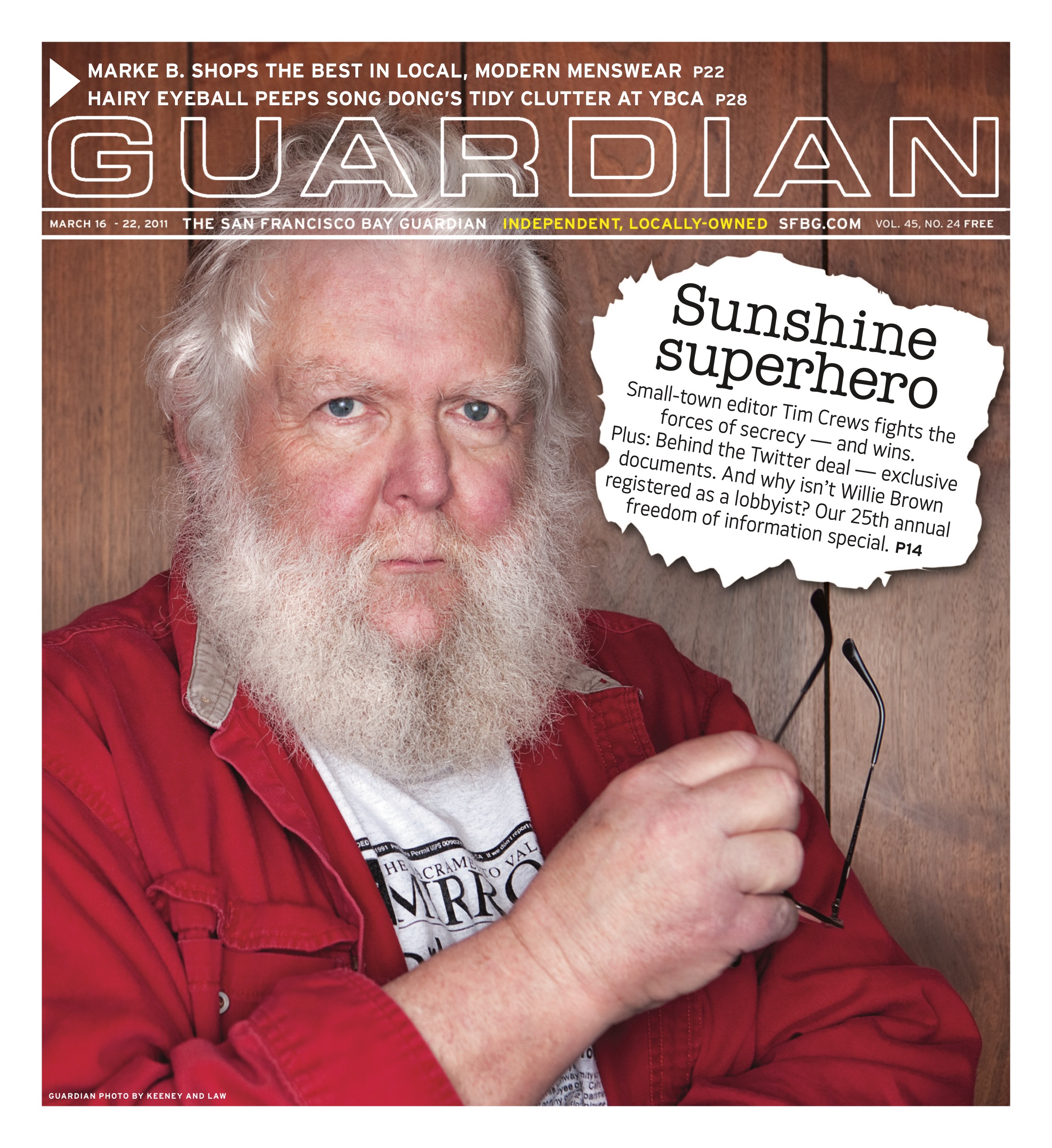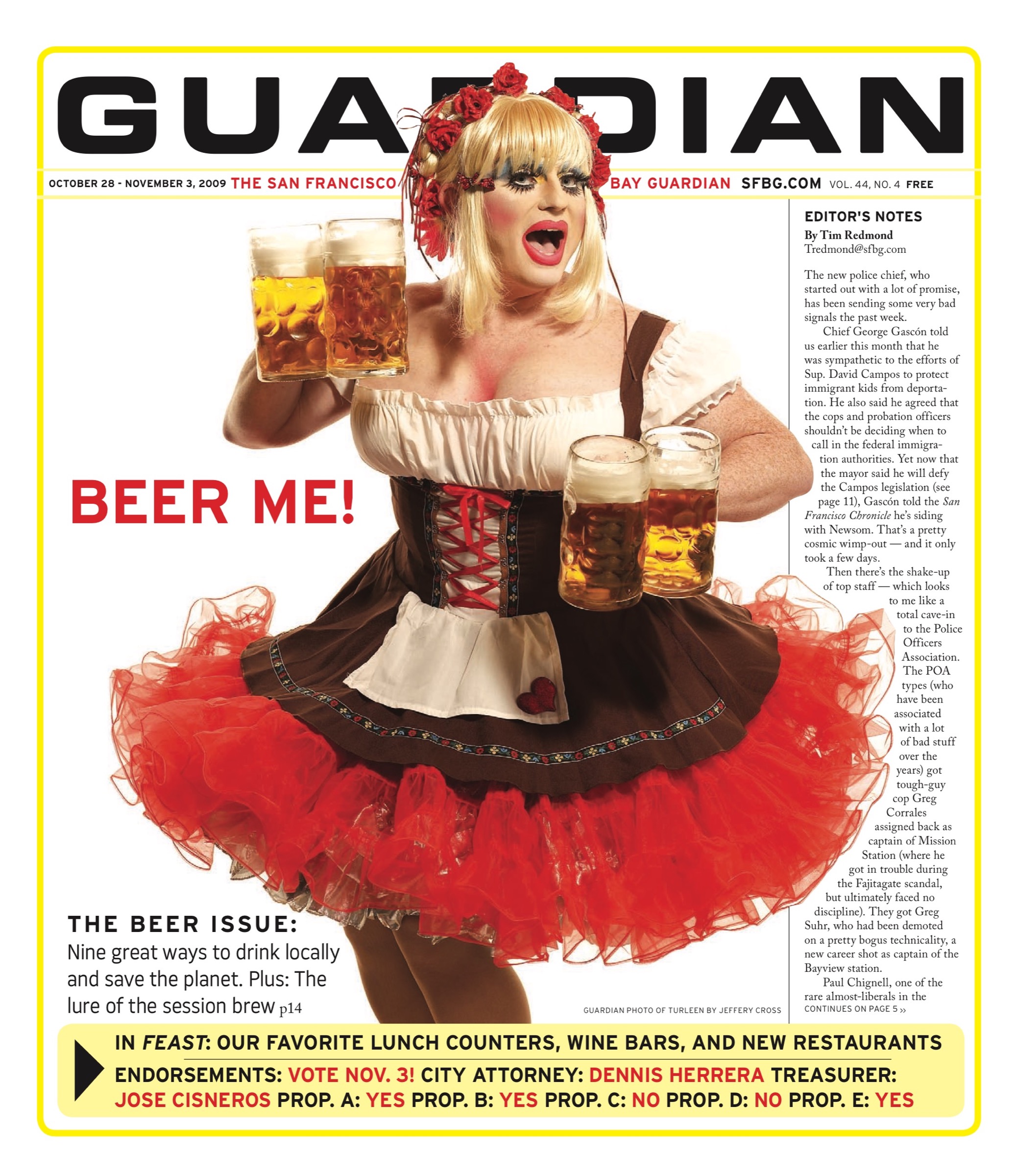arts@sfbg.com
MUSIC Some cowboy angels have been crying into their beer for salvation; meantime, some of us singing cowgirls who are also in struggle push onward to save ourselves. Texan-in-exile Josh T. Pearson’s new Last of the Country Gentlemen (Mute) is very much the answer record for that divide, its harrowing, beautiful 60 minutes transmuting into a sonic angel and devil’s advocate for both sides.
On hearing the disc’s seven songs — or, as when seeing Pearson live a few weeks past at Brooklyn’s Bell House, where he opened with the one-two punch of “Sweetheart I Ain’t Your Christ” and “Thou Art Loosed” — you might be inclined to label the work mere post-breakup bittersweets, or worse, sexist. Yet you would be woefully wrong, akin to those scene-making hipsters at the Bell House who refused to pocket their cell phones and thus did not respect the artist or the hush required to truly hear the songs. You would not be awake to the fact that Brother Pearson’s preaching the (female) listener toward empowerment. He fled Sam the Sham, crossing the pond for refuge, solace, and space, but did not find old world streets paved with gold, and ultimately he was stalked by heartache, firewater, and despair. No one else can love you into wholeness. Reckon I don’t know if Jesus saves; down here, it appears nobody can save your soul but you — savior self.
In my recent long seasons of darkness, this is the hardest life lesson I was forced to learn. And so the acute sadness of Josh T. Pearson the artist — once weighted with the spoils and pressures of one anointed as sonic savior, courtesy of his prior trio Lift to Experience and its lone apocalyptic recording The Texas-Jerusalem Crossroads (2001) — and his seven devastating accounts of love gone wrong, about the chains of dissipation and loss of mind and self, resonate with me in ways that cannot be reduced to printed matter nor speech. After a decade of inner turbulence and music’s collective loss of grace, here, at last, is a recording made by a grown-ass man.
With their length and delicate, unvarnished instrumentation — chiefly, Pearson’s voice and guitar, recorded over two days in Berlin with strings added a few months later — the songs of Last of the Country Gentlemen will doubtless cause some to resist, too cowardly to engage with pain. They need to recognize that Pearson is strong enough to balance (gallows) wit with generous depth and unflinching honesty. See “Honeymoon is Great, I Wish You Were Her,” or even the tortured meshes of “Sorry With A Song,” with its “Last time you left I got my drunk ass whupped in a fight/ My whole life’s been one clichéd country unfinished line after line after line after line.” On stage at the Bell House, he joked about expecting to see more beards in the Brooklyn crowd, and noted that the 10-year length of his own mirrored his “absence.” Awake, awake…know his embodiment of the divine.
The portrait Pearson is gentlemanly enough to present: a young Ugly American seeking detachment abroad, unraveling, and painstakingly slaying dragons to evolve and become a better human. Yes, there are ghost notes between his being the son of a Southern preacher man and myself being the granddaughter, niece, cousin of same; a shared lore of traditions and the Word communicates beneath the surface of this record (and I nigh passed out when he seamlessly recuperated the Melodians-minted “Rivers of Babylon” into his oeuvre live last week).
It matters not that Pearson focused on busking and drifting across western Europe and the isles, surfacing only once in the past decade with a (fitting) cover of Hank Williams’ “I’m So Lonesome I Could Cry” and continuing to sit on a trove of unreleased material. In fleeing the horrors of Bush America, he reconnected with the traditions of his own soil and kinfolk (as slyly/sadly limned on the single, “Country Dumb”) and went through them changes to fiercely mature as songcatcher and man. When he opens his record keening, crying that he is “off to save the world,” he may be earnest and he might be clowning himself. It could just be the bravado of wishful drinkin’, but it sho’nuff ain’t purty aesthetic insincerity. I am bone-weary of Pan’s musical sons capering in the glades, and the ever-cloning manchildren of indie-ana. Give me Brother Pearson’s testimony and its rare, precious ability to trigger the full spectrum of human feeling.
The inevitable forthcoming hooptedoodle that results from Pearson’s appearance at Austin’s annual South by Southwest festival next week will determine how much of his vault comes to light and whether or not the amorphous-but-fervent digital cult that enshrined Lift to Experience and has awaited any new music with bated breath expands to a mass. However, I neither require consensus nor further laurels determining its future reception to claim that Last of the Country Gentlemen is a masterpiece. Especially when it seems possible that Brother Pearson could well disappear into Texas, never to record again. Or feel beckoned anew by the boomtown Berlin of our master satirist Californian bard Stew, and Pearson’s fellow quester, the noted East Village African performance artist Krylon Superstar (a “breathaholic,” as we all should be). He could pull a Josephine-with-her-leopards rather than remain here to help rebuild America(na) from the ashes.
I, the Indian watching from the deep dark woods as the settlers clash and struggle to resurrect themselves and their ideals from the heaven/hell of Bush’s infinitely twisted New Jerusalem, am very grateful that Josh T. Pearson has boldly called himself out an American dreamer. He reminds me that I could be one, too, if I am brave enough to bleed. This is worth so much more than letter grades and lazy crit comparisons to this act or that, so expect none. Due to powers of inner vision and commitment, Pearson conjures the two other maverick artists who framed the past decade for me: my most-beloved white chocolate master, Lewis Taylor, from the United Kingdom, and still-undersung, Carolina-to-canyon folk visionary Jonathan Wilson. But he is virtually without peer. It takes a great deal now to summon me from the abyss. Truth alone.
Myself, still too blue to fly — yet there is great remedy and mystery to be gained from Josh the Revelator’s Wild West revolution of the mind. I know you have heard the sounds of red, white, and blue footsteps scrawling in fear. You know intimately the disintegration of this earth. If only you have the ears to hear both the low lonesome and glory of “Sweetheart I Ain’t Your Christ,” wherein Pearson wrenches out, through rippling guitar, “You don’t need a lover or a friend/ You need a savior/ And I am not him.” Don’t flinch when he sings from a land you’re stranger to. Do not escape into the sunset — the brother needs you to openly and humbly step up as his amen corner, and welcome holy breath.
Josh T. Pearson will be making his solo debut at South by Southwest at three official performances — the first, Wed., March 16 at the Central Presbyterian Church in downtown Austin, should be the hot ticket



